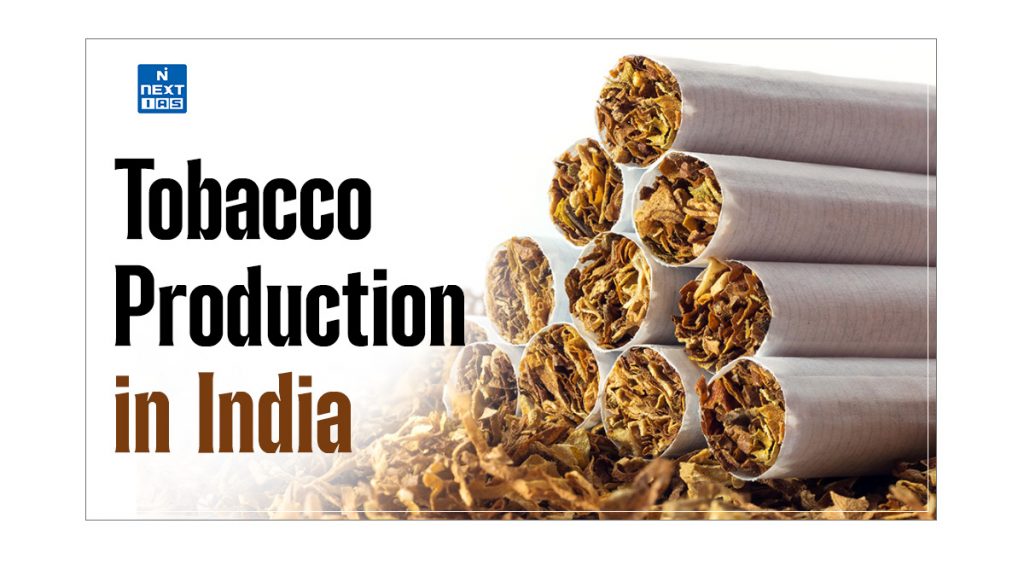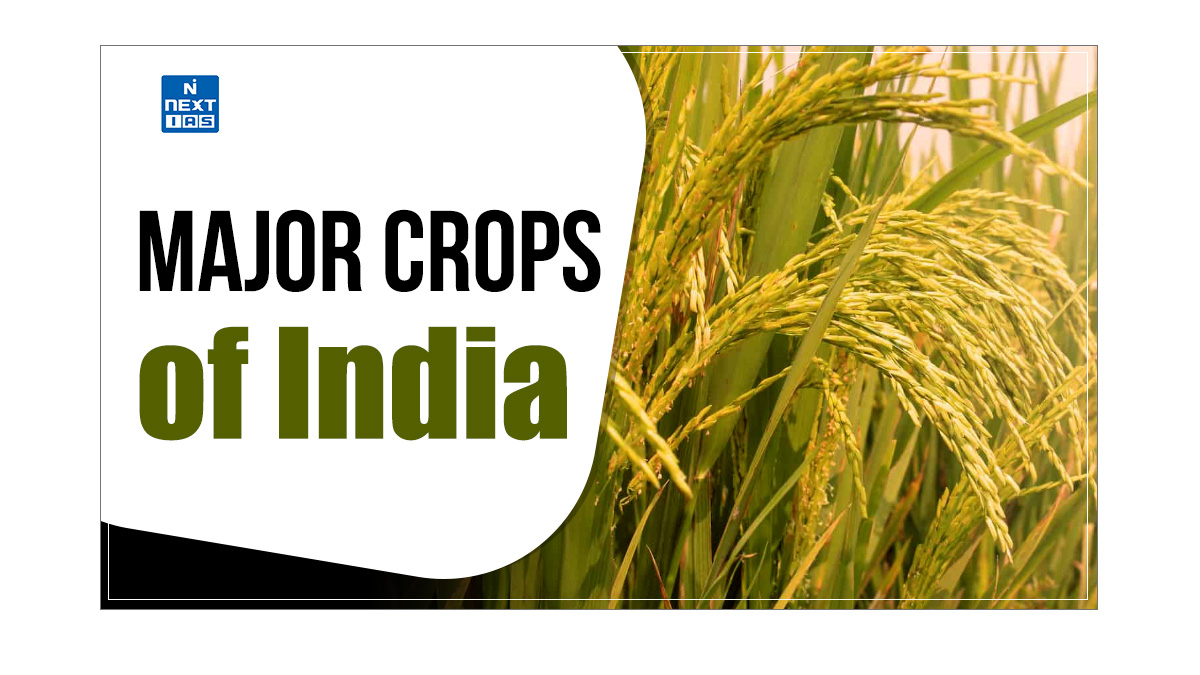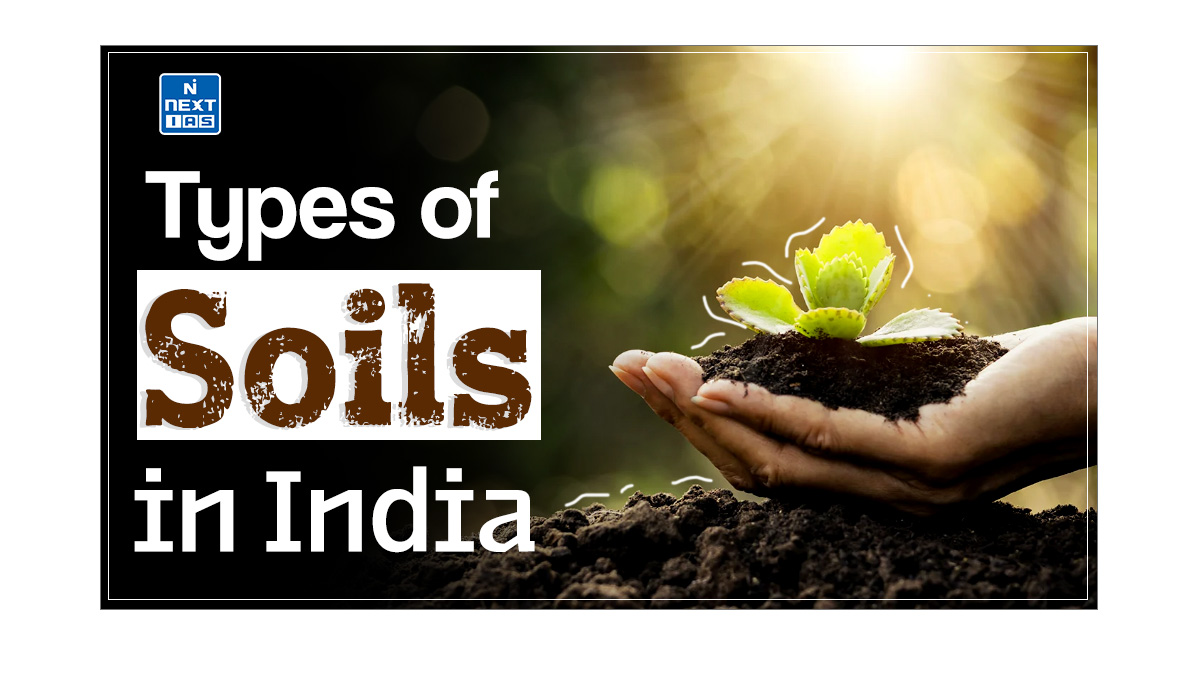
Tobacco is a versatile agricultural crop used primarily for smoking and manufacturing insecticides. Its economic significance is notable as it significantly contributes to domestic revenue and global trade. This article aims to study in detail the cultivation conditions, types, geographical distribution, and economic impact of tobacco in India.
About Tobacco
- Tobacco was introduced to India by the Portuguese in 1508.
- Primarily used for smoking, tobacco also plays a role in insecticide production, offering high returns to farmers.
- Globally, tobacco stands as one of the most economically vital agricultural crops.
- It is a hardy, drought-tolerant crop with a short growing period, suitable for soils where other crops may not be profitable.
- In India, tobacco is cultivated on 0.45 million hectares, accounting for 0.27% of the net cultivated area, and yields approximately 750 million kilograms of tobacco leaf.
- India ranks as the second-largest producer and exporter of tobacco, following China and Brazil, respectively.
Types of Tobacco
- A distinctive aspect of tobacco production in India is the cultivation of various styles of Flue-cured Virginia (FCV) and multiple types of non-FCV tobacco across diverse agroecological regions throughout the country.
- Tobacco is grown in about 15 states, playing a significant role in the economy and contributing to the prosperity of the farming community.
- The different types of tobacco produced include FCV, Bidi, Hookah, Chewing, Cigar-wrapper, Cheroot, Burley, Oriental, Lanka, Pikka, Natu, Motihari, Jati, and others.
Conditions for Growth of Tobacco
The conditions for the growth of tobacco are as follows:
- Climate – Tobacco is a plant of tropical and sub-tropical climates. It can withstand a wide range of temperatures varying from 16° to 35°C.
- As a result, it can be grown in many agro-climatic regions of India.
- Rainfall – It needs fairly well-distributed rainfall with an annual average of about 100 cm.
- It can be grown from low-lying plains up to 1,800 meters. Frost is injurious to its growth. Bright, rainless weather is helpful at the curing stage.
- Soil – For tobacco, soil is the most critical geographical distribution factor, not climate.
- Well-drained, friable sandy loams are ideal for cultivation.
- Soils should be rich in mineral salts (facilitate full root development) but not organic matter.
- Labour – Cheap and abundant labour is required at all stages of its cultivation.
Production of Tobacco in India
- India is one of the world’s largest tobacco producers, with Andhra Pradesh, Gujarat, and Karnataka being the leading states in its cultivation.
- The country produces various types of tobacco, including flue-cured Virginia (FCV), bidi, hookah, and chewing tobacco, catering to both domestic consumption and export markets.
- Tobacco farming plays a significant role in the agricultural economy, particularly in the states where it is grown, providing employment and revenue.
- However, the production of tobacco is also associated with health concerns and environmental challenges, prompting discussions on sustainable practices and regulation.
Geographical Distribution of Tobacco in India
The geographical distribution of tobacco can be seen as follows:
- Himachal Pradesh, Punjab, Uttar Pradesh – These states are known for their tobacco cultivation, particularly for producing varieties used in local consumption and bidis.
- Madhya Pradesh – This region produces a significant amount of bidi tobacco and also contributes to other varieties. The favourable climate and soil conditions support its growth.
- Karnataka, Andhra Pradesh, Tamil Nadu, Kerala – South India is a central tobacco-producing area. Karnataka and Andhra Pradesh are leaders in cultivating Flue-cured Virginia (FCV) tobacco, while Tamil Nadu and Kerala grow various types.
- Bihar, West Bengal, Odisha – Tobacco is grown extensively in these states, with Bihar being a significant producer of FCV and bidi tobacco. The region’s diverse agro-climatic conditions are suitable for various tobacco types.
- Assam – Assam is known for its high-quality Flue-cured Virginia tobacco. It benefits from its unique soil and climate conditions and contributes significantly to India’s tobacco exports.
- Flue-cured Virginia (FCV) – It is predominantly cultivated in Andhra Pradesh, Karnataka, and Tamil Nadu due to the specific climatic requirements and market demand.
- Bidi Tobacco – It is mainly produced in Madhya Pradesh and Maharashtra, where traditional practices and local demand sustain its cultivation.
Trade in Tobacco in India
- India has an advantage over the leading tobacco-producing countries due to low production costs and average farm and export prices.
- Indian tobacco is regarded as ‘value for money.’ India is a leading exporter of tobacco, ranking second globally after Brazil.
- The country contributes 6% by volume and 0.7% by value to the global tobacco trade.
- Major importers of Indian tobacco include the UK, Germany, Belgium, the former USSR, South Korea, and South Africa, which together account for over 60% of India’s tobacco exports.
| States | Production (in %) |
| Gujarat | 46% |
| Andhra Pradesh | 22% |
| Uttar Pradesh | 15% |
| Karnataka | 8% |
Economic Significance of Tobacco
The economic significance of tobacco is:
- Production Costs and Pricing – India enjoys an edge over leading tobacco-producing countries due to low production costs and competitive average farm and export prices. This makes Indian tobacco a ‘value for money’ product in the global market.
- Global Export Rankings – India is one of the leading exporters of tobacco, holding second place after Brazil. The country contributes 6% by volume and 0.7% by value to the global tobacco trade.
- Major Export Markets – Key importers of Indian tobacco include the UK, Germany, Belgium, the erstwhile USSR, South Korea, and South Africa, which account for more than 60% of India’s tobacco exports.
Conclusion
Tobacco plays a pivotal role in India’s agricultural landscape and economy. Its ability to thrive in diverse climatic and soil conditions and its high returns make it a vital crop for many Indian states. India’s strategic position as a leading exporter and cost-effective production underscores the crop’s global significance. Understanding tobacco’s geographical distribution and economic impact highlights its importance to the domestic economy and the international tobacco trade, reinforcing its value as a primary agricultural product.
World No Tobacco Day
- World No Tobacco Day, observed annually on May 31st, is an initiative by the World Health Organization (WHO) to highlight the health risks associated with tobacco use and advocate for policies to reduce tobacco consumption.
- The day serves as a global platform to raise awareness about the dangers of smoking and other forms of tobacco use, which contribute to millions of deaths worldwide each year.
- It also emphasises the importance of protecting future generations from tobacco’s harmful effects through education, legislation, and public health initiatives.
- The ultimate goal of this observance is to encourage individuals to quit tobacco use and to promote a tobacco-free world.
Frequently Asked Questions (FAQs)
What are the different types of tobacco?
There are different types of tobacco – Virginia, Burley, Oriental, and Nicotiana Rustica.
Which state produces more tobacco in India?
Andhra Pradesh is the leading producer of tobacco in India, contributing significantly to the country’s total production.






